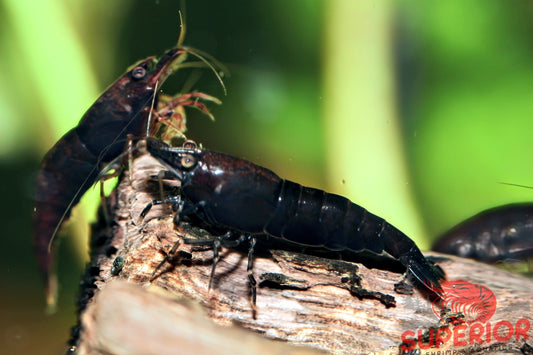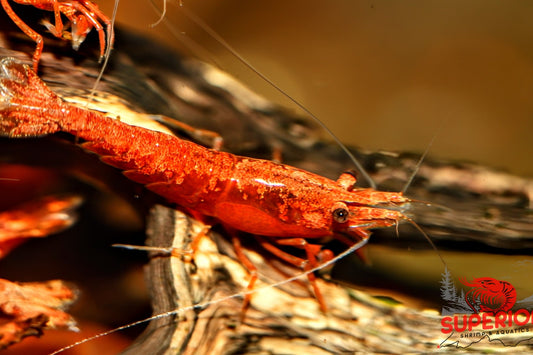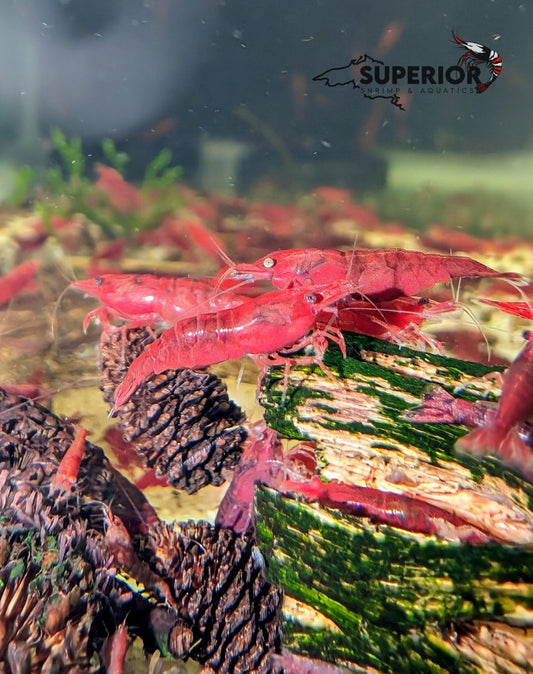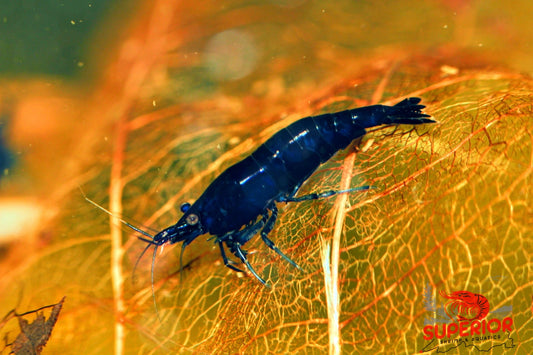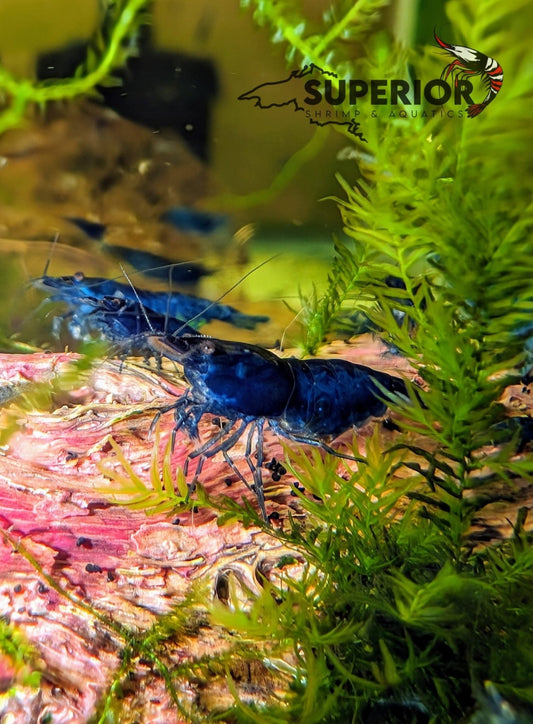A quick hello from the sand
Imagine a tiny chemist in a striped cone, half-buried with only a snorkel above the sand, quietly tasting the water for dinner. That’s the assassin snail: a Southeast Asian carnivore that hunts other gastropods and scavenges with patient precision. In aquaria, it’s best treated as a living control for nuisance snails and as an animal worth keeping on its own merits, never as a disposable tool. If you’re ready to recruit a few for your tank, start with healthy stock from Superior Shrimp & Aquatics – Assassin Snails.
Names, origins, and what that shell is really saying
You will meet this animal under Anentome helena, although older aquarium books use Clea helena. Modern phylogeny places it within Nassariidae (subfamily Anentominae) and suggests the trade name may cover a look-alike complex—useful to remember when two “assassins” from different exporters don’t quite match. The banded cone, the closing operculum, the tasting siphon, and the extendable proboscis are not ornaments; they are a toolkit built for ambush and protein.
Sex, dimorphism, and the honest way to tell
Assassin snails are gonochoric: individuals are male or female, and unlike many common aquarium snails they do not self-fertilize. External sexing is unreliable. Size and shell breadth vary with age and diet, so the responsible approach is statistical rather than visual. Begin with a small cohort and let probability supply both sexes; behavior confirms your hunches when you observe prolonged pairing followed by the appearance of single, squareish egg capsules on hard surfaces. The science behind this is refreshingly clear and comes from captive studies and museum notes.[1][2][3]
Courtship, eggs, and the tempo of reproduction
Courtship is unhurried and often lasts hours. Females deposit single eggs in square to rectangular capsules on wood, rock, glass, or plant bases, one at a time, often in short rows. Development is direct—there is no free-swimming larval phase—and temperature is the metronome’s hand. In a controlled culture at 25 °C, hatching occurred in about 52 ± 6 days and hatchlings measured roughly 3 mm, already shaped like miniature adults.[1] Warmer conditions within the safe range shorten the schedule; cooler conditions stretch it. Think in weeks, not days.
Growth, size, and what “adult” really means
Under steady protein and good mineralization, the shell grows rapidly at first and then tapers toward a mature length near two to three centimeters. Calcium and carbonate hardness create the shell budget; dietary protein pays for growth. When the budget collapses, shells turn chalky and pitted. The chemistry is simple and widely documented across mollusks: as pH falls, calcium-carbonate structures dissolve more readily, and shell quality suffers.[9]
Life cycle in practice
After hatching, juveniles vanish into the substratum and live a cryptic, sand-dwelling childhood. This is normal, not a failure of husbandry. Research notes and museum keys both describe burying as typical for the species; what looks like “no hatch” is usually a bustling nursery hidden beneath the sand’s top few millimeters.[4][10] Weeks later, subadults appear as if from nowhere and begin their exploratory phase.
Water chemistry, translated into real decisions
Stability with a gentle lean alkaline is the theme. Temperatures in the mid-70s to low-80s °F keep activity up and incubation times reasonable. A pH in the low eights with measurable carbonate hardness protects shells from dissolution and buffers against sudden, acidic dips that etch growth rings into chalk. General hardness supplies calcium and magnesium—the literal minerals of shell. Ammonia and nitrite remain unwelcome at any concentration; nitrate stays modest. Copper-based medications and stray metals are a hard no, as copper’s chronic toxicity to aquatic invertebrates is well established.[6]
Key water parameters (guideline)
| Parameter | Recommended Range | Acceptable Extremes | Notes |
|---|---|---|---|
| Temperature (°F) | 72–82 | 68–86 | Mid-70s to low-80s supports activity and breeding. |
| Temperature (°C) | 22–28 | 20–30 | Warmer within range shortens incubation time. |
| pH | 7.2–8.2 | 6.8–8.4 | Alkalinity protects shells; avoid acidic dips. |
| GH (°dGH) | 8–20 | 6–25 | Calcium and magnesium for shell growth. |
| KH (°dKH) | 4–12 | 3–14 | Buffers pH; prevents shell pitting. |
| TDS (ppm) | 180–400 | 140–500 | Broad tolerance; consistency matters most. |
| Ammonia / Nitrite | 0 | 0 | Snails are sensitive; aim for zero. |
| Nitrate (ppm) | < 30 | < 50 | Lower is better; plants and water changes help. |
Habitat design from the snail’s point of view
Sand is not décor; it is survival. Juveniles need fine substrate to disappear into, and adults use it for camouflage and ambush. Provide a sand or smooth-gravel zone and give them textured hardscape for egg deposition and biofilm. If you’re building the stage, browse Hardscape – Rocks & Wood and add character with Aquarium Botanicals. For ready-made ambush and biofilm pockets, Lotus Pods make excellent micro-caves. Flow should be modest and broken by wood and plants so chemical cues linger for that long siphon to taste. Lighting is ornamental to you, not essential to them.
Diet, ethics, and the tricky business of “preferences”
This species is an obligate carnivore that specializes in other snails. As biological control, it excels on small pest species such as Ramshorn Snails. When pests run out, assassins must still eat. Scheduled offerings from your Aquarium Food & Supplements collection—sinking carnivore pellets, shrimp wafers, or frozen proteins—keep curiosity from drifting toward large ornamental snails or freshly molted shrimp. Experiments reveal a neat paradox: populations behave like generalist predators, while individuals often show consistent prey preferences. That is why one assassin seems to “prefer” ramshorns and another specializes on trumpet snails, even in the same tank.[4][5]
Stocking and management without drama
There is no sacred ratio because tanks and prey densities vary. A light introduction in a planted community often resets a nuisance-snail bloom over weeks to months. As prey dwindles, assassins roam more openly along glass and hardscape—a behavioral cue that it’s time to formalize the feeding schedule. If you are protecting large ornamental snails, feed assassins well, or separate the animals; biology listens to appetite, not promises.
A home breeding recipe you can actually follow
Begin with a cohort rather than a pair to let probability supply both sexes. Include a sand patch and rough hardscape. Hold temperature steady in the warm, safe band and keep pH and KH gently alkaline. Offer a consistent protein source and allow a controlled feeder-snail presence until you see capsules. Resist the urge to polish every surface; the nursery lives under the sand. Development is slow, and that’s fine—at 25 °C, plan on roughly seven to eight weeks for hatching.[1][2][3]
Compatibility, myths, and the occasional moral quandary
Assassin snails usually ignore plants and coexist with most fish that won’t eat them. They are broadly compatible with Neocaridina Shrimp and Caridina Shrimp, provided you feed well and keep molts protected in plant thickets and wood. They do not explode in number like pond or bladder snails; reproduction is measured and easy to manage. The ethical bit is simple: a predator introduced to solve a problem remains your responsibility after the problem is solved. Have a feeding plan or a rehoming plan.
Troubleshooting like a calm scientist
Chalky, pitted shells advertise weak alkalinity or chronically depressed pH; correcting KH and providing calcium safeguards new growth, though old scars remain.[7–9] Lethargy in a previously active colony usually means hunger or suboptimal temperature; confirm both before chasing exotic causes. Capsules that never seem to produce juveniles are often a matter of time and temperature; remember the buried nursery and adjust expectations accordingly.[1][10] Sudden losses after medication almost always implicate copper; verify ingredient lists and quarantine treatments away from mollusks.[6]
A short word on spread and responsibility
The same efficiency that makes assassins useful in aquaria makes them risky if released. Singapore documented the first non-native establishment; the moral is simple: rehome responsibly, never release.[5] Taxonomy adds a final cautionary note: what the trade calls A. helena is probably a complex, and moving cryptic species around carelessly is how invasion notes get written.[3]
Shop the essentials while you read
If you’re building an assassin-friendly scape from scratch, start with Assassin Snails, seed a manageable prey base with Ramshorn Snails, round out the diet from Food & Supplements, sculpt the habitat with Hardscape, and add texture and tannins via Botanicals and Lotus Pods. If you’re pairing with shrimp, browse both Neocaridina and Caridina lines and plan your planting to give molting individuals several bolt-holes.
Footnotes & Sources (URLs included)
[1] Coelho, A. R., Dinis, M. T., & Reis, J. (2013). Effect of Diet and Stocking Densities on Life History Traits of Clea helena Reared in Captivity. Hatching ≈52 ± 6 days at 25 °C; direct development; hatchling size. PDF: https://www.cabidigitallibrary.org/doi/pdf/10.5555/20143016853
[2] Australian Museum – Freshwater molluscs key. Anentome “helena”: separate sexes; single egg per square capsule; eggs on solid surfaces; habitat notes; Nassariidae/Anentominae placement. https://keys.lucidcentral.org/keys/v3/freshwater_molluscs/key/australian_freshwater_molluscs/Media/Html/entities/anentome_helena.htm
[3] Strong, E. E., Galindo, L. A., & Kantor, Y. I. (2017). Quid est Clea helena? Evidence for a previously unrecognized radiation of assassin snails. PeerJ 5:e3638. Species-complex insight; Anentominae in Nassariidae. https://pmc.ncbi.nlm.nih.gov/articles/PMC5555293/
[4] Berkhout, B. W., Morozov, A. Y., et al. (2022). Assassin snails as a model for individual specialisation within generalist predators. PLoS ONE 17:e0264996. Population-level generalism with individual prey preferences; husbandry note on burying. https://pmc.ncbi.nlm.nih.gov/articles/PMC8920249/
[5] Ng, T. H., et al. (2016). First non-native establishment of the carnivorous assassin snail Anentome helena in Singapore. BioInvasions Records 5(3). PDF: https://www.reabic.net/journals/bir/2016/3/BIR_2016_Ng_etal2.pdf
[6] U.S. EPA (2007). Aquatic Life Ambient Freshwater Quality Criteria – Copper (Revision). Copper toxicity to aquatic life, including invertebrates. PDF: https://www.epa.gov/sites/default/files/2019-02/documents/al-freshwater-copper-2007-revision.pdf
[7] Økland, J. (1992). Effects of acidic water on freshwater snails. Hydrobiologia. Field evidence linking low pH and snail absence; calcium context. PubMed: https://pubmed.ncbi.nlm.nih.gov/15091938/
[8] Ewald, M. L., et al. (2009). Acute physiological responses of freshwater snails to low pH. Demonstrates shell-buffering costs at acidity. Abstract: https://www.sciencedirect.com/science/article/abs/pii/S1532045609001124
[9] Smithsonian Ocean Portal. Ocean Acidification overview. General calcium-carbonate dissolution mechanism applied to shells. https://ocean.si.edu/ocean-life/invertebrates/ocean-acidification
[10] Newel & Bourne (2015). Poster: The “assassin” snail Clea (Anentome) helena as a model for developmental and environmental physiology. Notes on burying behavior and egg capsules. https://www.researchgate.net/publication/277248530
